T&C Travel Guide: Mallorca
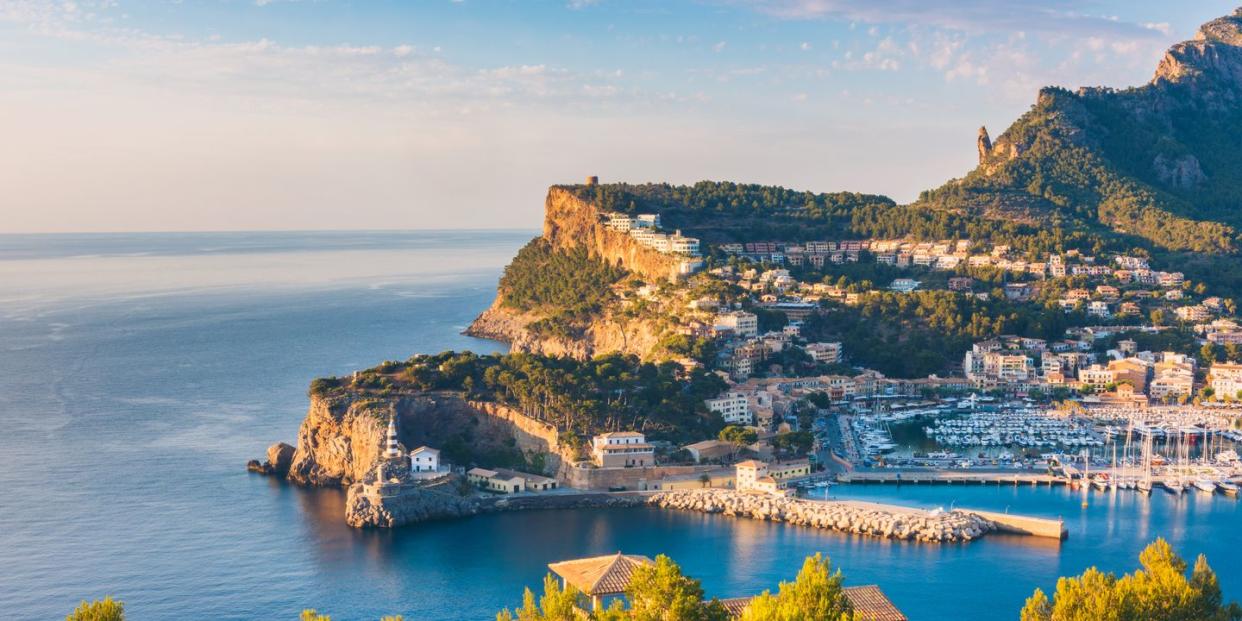
- Oops!Something went wrong.Please try again later.
"Hearst Magazines and Yahoo may earn commission or revenue on some items through the links below."
There is nothing quite like a sun-kissed seaside idyll to soothe a troubled soul—and inspire a literary mind. Ian Fleming wrote all 14 of his James Bond novels at Goldeneye, his estate in Jamaica (where playwright Noël Coward was a neighbor). Ernest Hemingway finished For Whom the Bell Tolls and The Old Man and the Sea at Finca Vigía, his Havana home. Patrick Leigh Fermor chose Kardamyli, in Greece's Southern Peloponnese, to build his sanctuary. And Robert Graves decamped to the tiny village of Deià, in Mallorca, in 1929 and—save for the ten years he spent in the U.S. and back in England during the Spanish Civil War and World War II—lived there for the rest of his life (he died in 1985 at the age of 90).
"I found everything I wanted as a writer: sun, sea, mountains, spring water, shady trees, no politics..." the poet wrote of his adopted home. Even today, Mallorca, the crown jewel of Spain's Balearic Islands, still overflows with charm: ancient villages steeped in eons of history (Phoenicians, Romans, Vandals, and Moors have all laid claim to the island), honey-colored stone houses on cobbled alleyways, the ever-lingering fragrance of lemon and orange trees and olive groves, and all of it sprinkled against the backdrop of the majestic Serra de Tramuntana mountain range and a Lapis Lazuli-blue Mediterranean.
Herewith, a T&C guide to where to stay, eat, and sightsee for a dreamy Mallorcan summer holiday.

Where to Stay
Belmond La Residencia
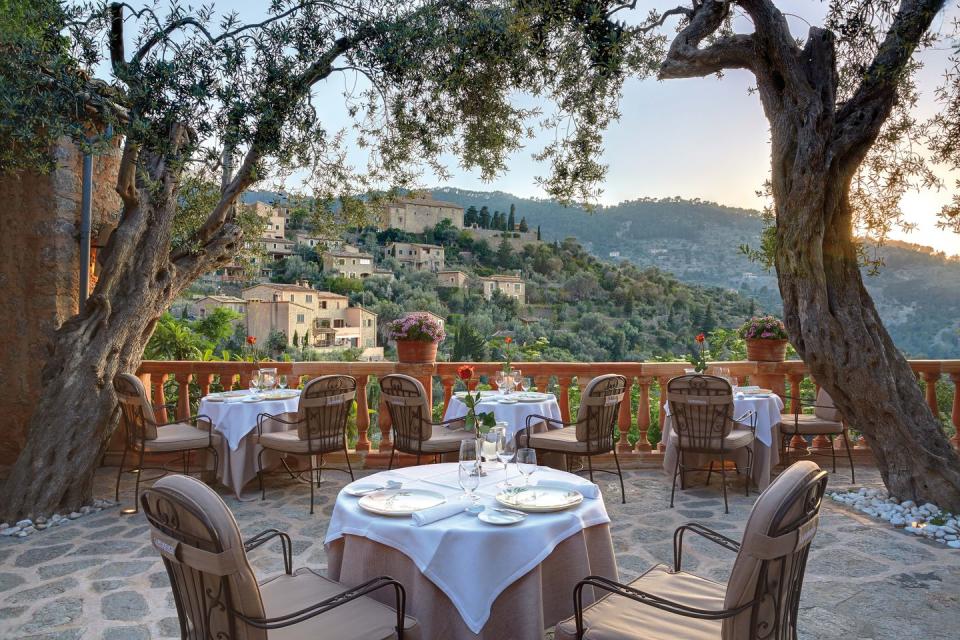
It's really hard to beat La Residencia, a Belmond Hotel, a glamorous hideaway with a prime address in chic, artsy Deià, an abundance of olive and citrus groves, and a perfect perch tucked cozily between mountains and sea. In a nod to the town's creative classes, La Residencia also has an extensive collection of art—more than 750 works—on display throughout the 72-room property. As for on-site recreation, there is plenty: an award-winning spa, tennis courts, painting and sculpture classes, and Vespa tours. And then there's the fine dining. In June, Rafael Zafra, best known as the former head chef at famed Spanish restaurant El Bulli, unveiled a new menu for the Pool restaurant that puts a premium on local ingredients like prawns from Sóller. But don't sleep on his desserts: the presentation of his pineapple, which comes with a tier of crema Catalana, is a show in and of itself.
Cap Rocat
Located about 30 minutes south of Mallorca's capital Palma, Cap Rocat is perhaps one of the most unique properties on the island—it's housed in a former fortress, built in the 19th century for military defense (though it was never used). Today, the luxurious 88-acre resort, flawlessly restored for the 21st century by the architect Antonio Obrador, is built into the craggy coastline of the Bay of Palma and also happens to be in the middle of a bird sanctuary.
Finca Serena Mallorca
For an off-the-beaten-path experience, head to Finca Serena Mallorca, a 100-acre property in the heart of the island that is pure bucolic bliss: 24 acres of vineyards, more than 900 olive trees, lavender fields, fruit orchards, vegetable gardens, a wonderful spa, yoga classes, and chef workshops. The best part? For such a sprawling hotel, there are just 25 rooms.
Hotel Mirabó De Valldemossa
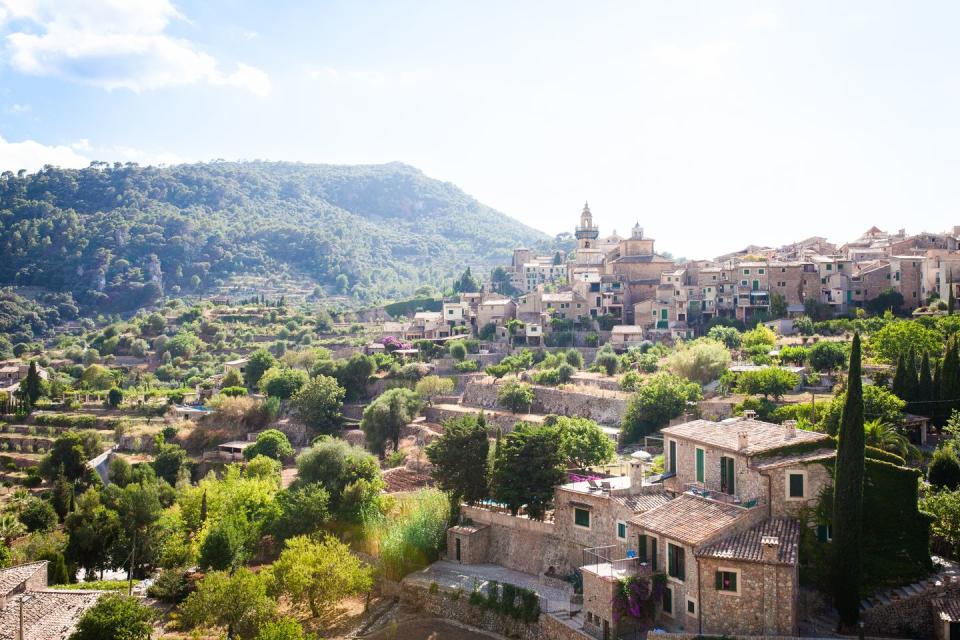
The intimate Hotel Mirabó has been in the same family since 1898 (it became a boutique hotel in 2004) and with just 9 rooms, it won't take very long to feel completely at home here (elegantly cozy decor and a plethora of hidden nooks to discover also help). The property itself dates back to 1503 when it was an olive farm and is nestled on a hill just outside of the beautiful countryside village of Valldemossa, which means fabulous views of the postcard-perfect town.
El Vicenç de la Mar
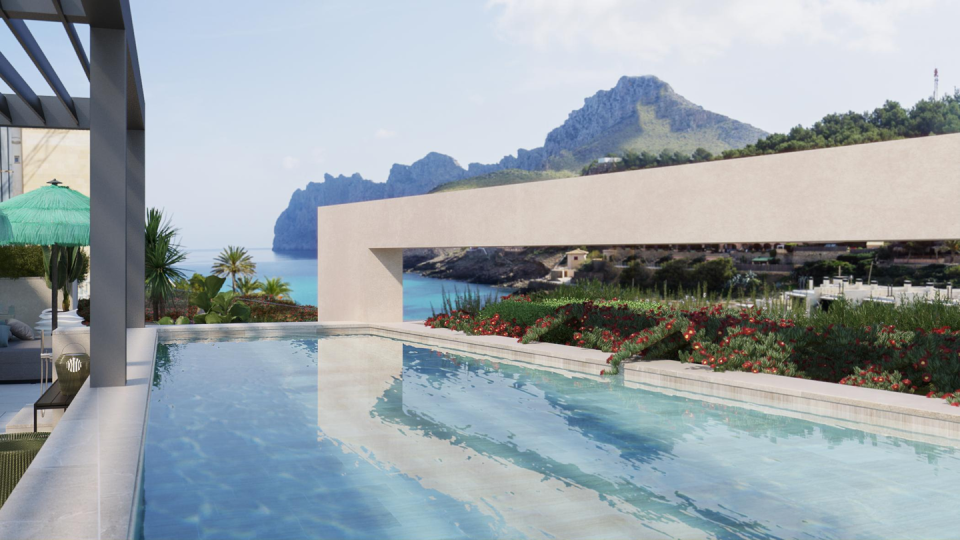
The newest hotel in Mallorca opened in June. Located in the Northeastern corner of the island, in the town of Cala Sant Vicenç, the 35-room property overlooks a striking beach popular with locals and families. Palma may be overrun with tourists, but this area remains undiscovered, at least for now. Get there before visitors realize that the one hour drive from the airport, and from the more well-known Deià, can lead to such remarkable sights as the Es Colomer viewpoint and the tranquil waters of Cap de Formentor. The hotel features a spa and two restaurants, a casual lunch spot and a fine dining rooftop. Naturally, croquetas are served at both.
Where to Eat
Xelini
An ideal spot to stop for a tapas lunch before (or dinner after) exploring the village of Deià, Xelini is built in a 130-year-old building. But while the interiors are indeed charming, with their stone walls and wooden beams, prime seating is in the picturesque garden with views of the Serra de Tramuntana mountains all around. Grab one of the tables under the trellis of climbing vines for a shaded oasis from the blazing Spanish sun.
Patisseria Ca'n Molinas
Founded in 1920 in the heart of Valldemossa, this bakery is famous for the coca de patata (potato roll), a sweet local specialty made with boiled potatoes, lard, eggs, flour, milk, and sugar. Do as the Mallorcans do and pair with a refreshing almond horchata.
Ca's Patro March
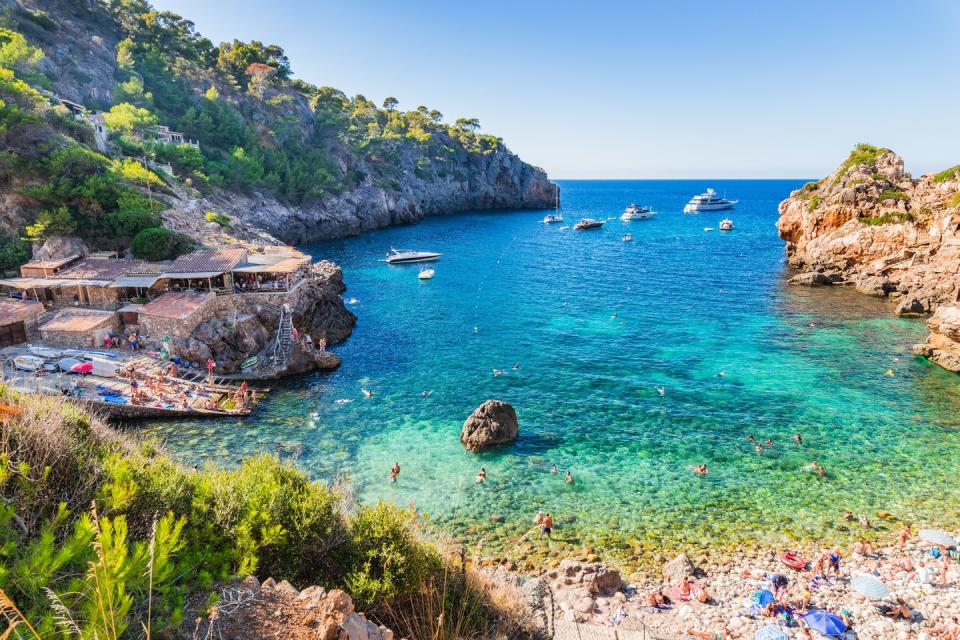
The secret has long been out about Ca's Patro March, the celebrity-adored no-frills restaurant perched on a little cliff in the rocky cove of Cala Deià, another erstwhile hidden gem. Still, despite their outsize popularity (Ca's Patro March, in particular, reached a new level of fame thanks to BBC's 2016 television adaptation of John le Carré's The Night Manager, which starred Tom Hiddleston and was filmed around Mallorca, including at the restaurant), a visit is worth it. The seafood, all simply grilled and caught by local fishermen, is fantastic, plus Cala Deià's sparkling blue waters are irresistible for a refreshing post-lunch dip.
Ca'n Joan de s'Aigo
The 300-year-old bakery now has three locations in Palma and specializes in ensaïmadas, a Mallorcan pastry that traces its roots back to the 17th century and comes in a variety of flavor iterations (fillings include apricot, custard, cream, apple, or chocolate). Pair with the hot chocolate, for which Ca'n Joan de s'Aigo is also famous.
Bens d'Avall
Panoramic views of the sea (and at sunset, especially) are reason enough to warrant a dinner reservation at Bens d'Avall in Sóller but so is the food: the restaurant has a Michelin star. Fresh Mallorcan seafood, produce, and beef get star billing on the menu, which includes standouts like bouillabaisse, lamb roasted over a wood fire, and red prawn carpaccio.
What to Do
Marivent Gardens

Although Marivent Palace, the summer residence of the Spanish royal family, is closed to the public, its gardens are open when King Felipe VI, Queen Letizia, and their daughters aren't in town. The well-tended sanctuary has 40 different plant species and is dotted with 12 sculptures by Joan Miró, the famous Catalan artist who was born in Barcelona but later called Mallorca home. (Visit his Palma museum, the Fundació Pilar i Joan Miró, which was established after he donated 6,000 works before his death.)
Palma Cathedral
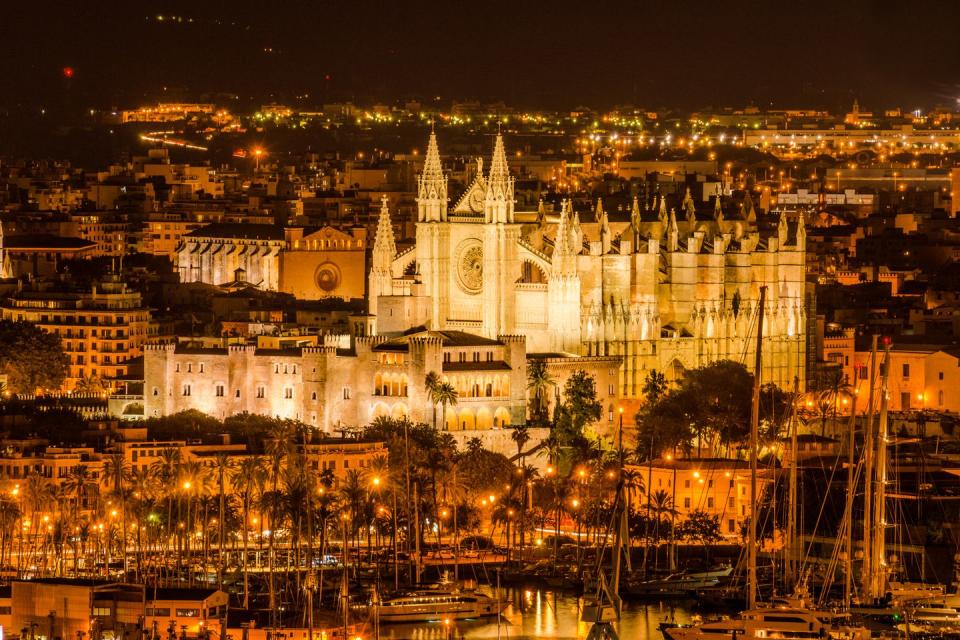
Every year (not counting the last two due to Covid-19) the Spanish royal family attends Easter mass at the Cathedral of Palma. Commissioned by King James I of Aragon in 1229 and designed in the Gothic style—with a few Northern European touches—the church took nearly 400 years to complete. The final edifice, which was finished in 1601, overlooks the Mediterranean Sea and is located next to the Royal Palace of La Almudaina, which used to be a Moorish alcázar before King James II of Mallorca rebuilt it in 1309. Today, it's the official Mallorcan residence of the Spanish royal family (while Marivent is considered their summer home).
Son Marroig
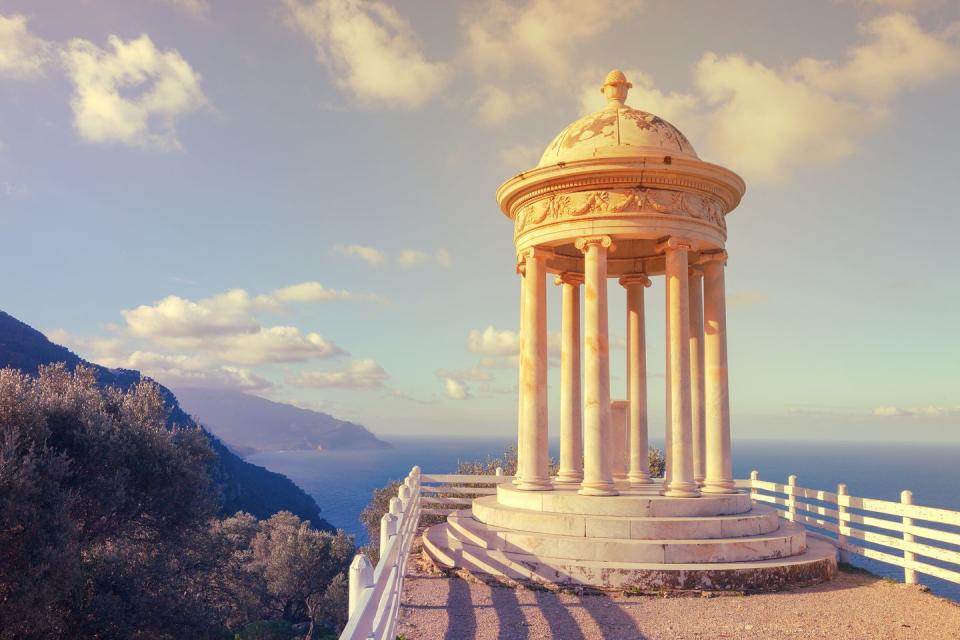
Long before "conservation" became a life calling for just about every blue-blooded scion, Austria's Archduke Ludwig Salvator was an early pioneer in the field. The son of Leopold II, Grand Duke of Tuscany, and Princess Maria Antonia was born in Florence's Pitti Palace and raised in the aristocratic circles of Vienna but he fell in love with low-key, verdant Mallorca. Once he had settled permanently on the island, he bought up untouched, coastal areas of land between Valldemossa and Deià to prevent them from being developed and devoted his life to studying Mallorcan wildlife. His estate, Son Marroig, is now a historical museum and a popular venue for concerts and—with views like this—weddings. One of his other properties, the 250-acre S'Estaca, belongs to Michael Douglas and Catherine Zeta-Jones.
La Casa de Robert Graves
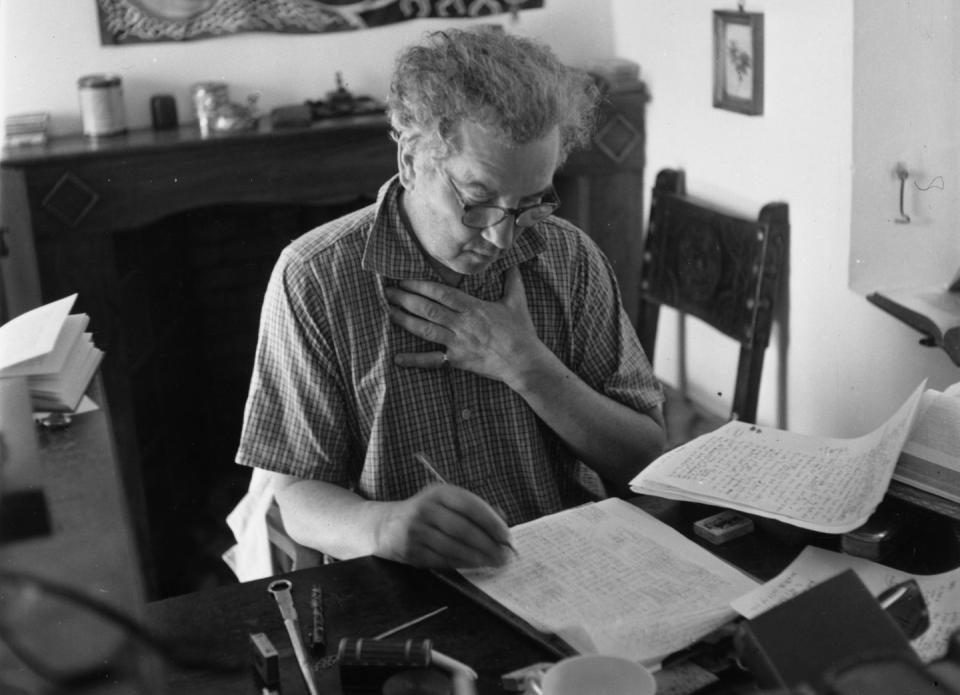
In Deià, British poet and author Robert Graves found peace, inspiration, and an escape from the psychological ravages of World War I. He moved to the village in 1929 and three years later built his house, which he named Canallún (meaning "faraway home" in Catalan). Between mornings swimming in Cala Deià and afternoons spent at local cafes, Graves wrote prolifically and completed several works while living here. Since 2006, his house has been open to the public.
Chopin's Home
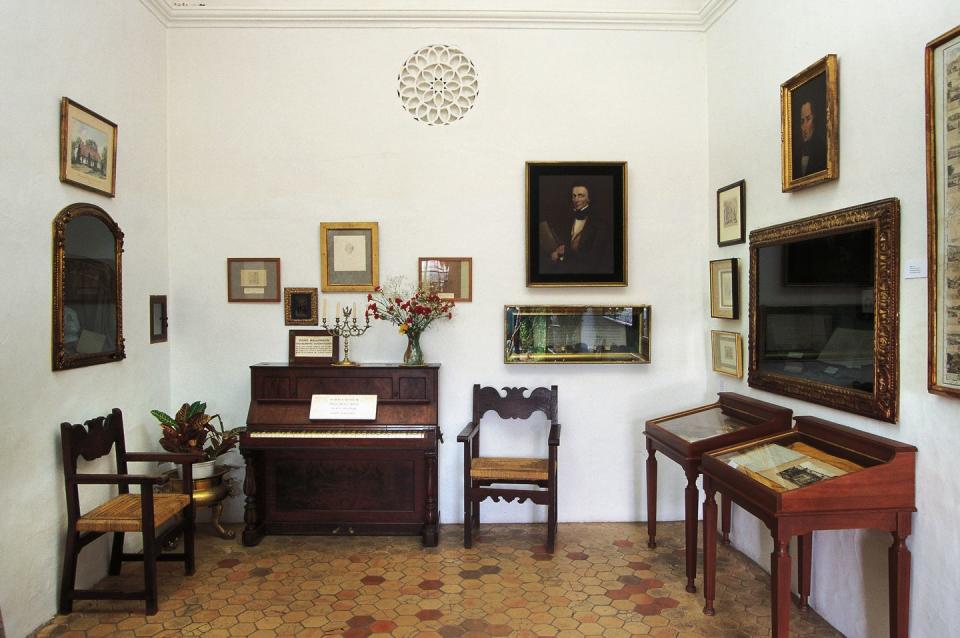
The Carthusian Monastery of Valldemossa (also known as the Valldemossa Charterhouse) is the town's most historically significant landmark. It was originally the palace of Sancho, King of Mallorca from 1311 to 1324. At the end of the 14th century, with the kingdom of Mallorca abolished, the palace turned into a monastery for Carthusian monks. It remained in their possession until the Spanish confiscation of 1835, after which the individual cells were put up for rent. Its most famous tenant was the composer Frédéric Chopin, who lived in a 3-room apartment with his lover, the French novelist George Sand, in the winter of 1838-1839. His home—and garden—is now a museum. Also worth visiting within this vast complex: King Sancho's palace, the Charterhouse apothecary, and the church, whose stunning interior frescoes were created by Francisco Bayeu y Subías, brother-in-law of Francisco Goya.
Serra de Tramuntana
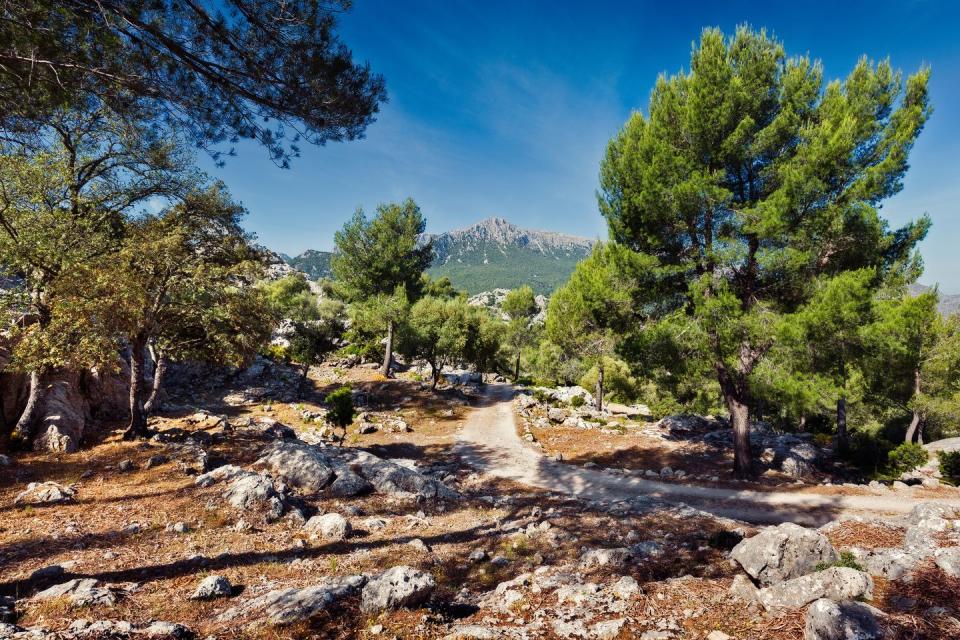
Running along Mallorca's northwestern coast—and dotted with villages like Deià amd Valldemossa—the Serra de Tramuntana is a UNESCO World Heritage site brimming with hiking (and biking) trails, fragrant flora (rosemary, pine, and those ubiquitous olive trees), historical landmarks, and views so beautiful they may inspire a Stendhalian moment.
What to Pack
You Might Also Like

